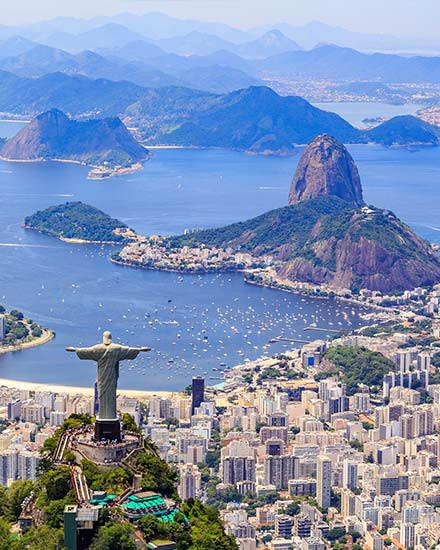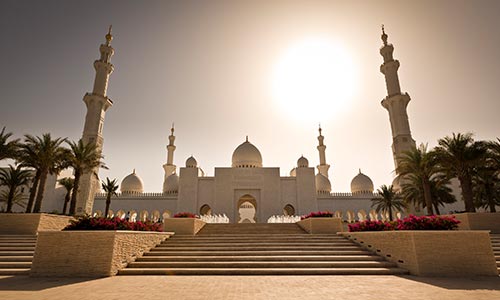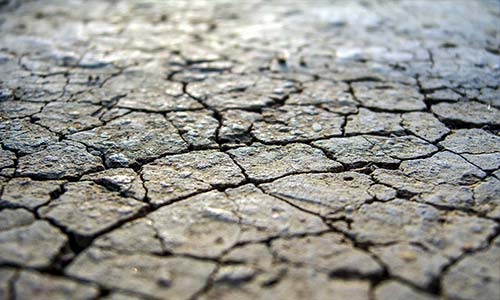Communities all across the globe suffer from a severe lack of drinkable water. Many people think of water scarcity as an issue exclusive to desert regions and the dry continent of Africa. On the contrary, due to climate change, drought, explosive population growth, pollution and poor water management, it’s clear that in the 21st century water scarcity is not isolated to just one region.
Earth is expected to add another 1.2 billion people to its population by 2030, meaning that the need for water will increase by 30 percent. With most of world’s aquifers already over-exploited or undrinkable due to bacteria and man-made pollution, the need for an alternative water supply is suddenly elevated to an unprecedented level of importance. As a result, more and more countries are turning to desalination as a solution, because whether it’s salt or bacteria, reverse osmosis removes all harmful contaminates in one process.
To better understand this global challenge, let’s look at the largest countries in the world and how they are dealing with water scarcity. The list below represents some of the largest countries on each continent, excluding Antarctica, and their plight to pursue membrane-based water treatment as a practical alternative for obtaining drinkable water.
Australia
 The story of Australia’s water shortages is short and simple. As the world’s driest inhabited continent and sixth largest country, Australia is no stranger to the harsh realities of water scarcity. Australia traditionally met its water needs by pulling freshwater from dams and drainage basins, but in 2000 the continent was hit by a decade–long drought that dried up these reservoirs. This water crisis was dubbed the Millennium Drought, and it forced Australia to seriously consider alternative water supplies.
The story of Australia’s water shortages is short and simple. As the world’s driest inhabited continent and sixth largest country, Australia is no stranger to the harsh realities of water scarcity. Australia traditionally met its water needs by pulling freshwater from dams and drainage basins, but in 2000 the continent was hit by a decade–long drought that dried up these reservoirs. This water crisis was dubbed the Millennium Drought, and it forced Australia to seriously consider alternative water supplies.
Australia fought its way out of this extreme drought by aggressively building desalination plants, the first of which was built in 2006. In the 15 years it took the United States to plan just one desalination plant in California, Australia built and started 6 of them before 2013. With plants in every state but one, Australia—the world’s sixth largest country—has become a champion of combating water scarcity with desalination technology.
China
In addition to being the fourth largest country in the world, China is also the world’s most populous country, a characteristic that has huge implications China’s water management. China is home to 20 percent of the world’s population, yet only 7 percent of the world’s freshwater is accessible in the region’s rivers and underground aquifers. As a result, seasonal scarcity coupled with the man-made pollution that comes with a crowded populace is giving rise to both quality and quantity water challenges in the Middle Kingdom. Today, 400 of China’s largest 669 cities still face serious water shortages, mostly due to industrial water pollution in rivers like the infamous Yangtze and Yellow Rivers.
China has been actively addressing its water stress since 2006 when the government announced several plans to foster water conservation and seawater utilization. Notably, the Special Plan for Seawater Utilization set a goal for the country to produce 300 million tons (870 million gallons) of filtered seawater each day by 2020. Additionally, the Chinese government instituted a new policy banning heavy industrial facilities from drawing water from the rivers, instead requiring them to come up with their own water sources. Consequently, 60 percent of desalinated water in China is for industrial use.
Today, China is fifth in the world for installed desalination capacity, with plans to grow the industry to continue addressing water shortages, as well as to create an export market for filtered drinking water.

Brazil
Unlike many other countries installing desalination technology, Brazil—the world’s fifth largest country—is not a water scarce country. In fact, experts estimate that 12 percent of the world’s surface water lies beneath Brazil’s soil and in its rivers. Brazil’s water challenge instead lies in the uneven distribution of its water sources.
The Amazon River basin accounts for 75 percent of Brazil’s freshwater, but it is only easily accessible by 4 percent of the population. Conversely, the most populous region in Brazil holds only 5 percent of the country’s fresh water supply, yet 73 percent of Brazilians call this region home. To make matters worse, in 2014 Brazil was hit with the worst drought in 80 years. The ripple effects of this drought, coupled with a polluting, growing population have been devastating to the country’s water supplies.
Desalination has proven to be a viable solution to water scarcity in Brazil’s driest Northeastern region. In the dry state of Ceará, the government funded desalination alternatives in 48 cities. The nature of these plants differs slightly from those of other countries turning to desalination as a solution in that Brazil isn’t using membrane-based technology exclusively to desalinate coastal seawater. Instead, in states like Ceará, reverse osmosis technology is needed to desalinate brackish groundwater. Thanks to these efforts, Ceará has 222 desalination systems in use today.
Algeria
As the largest country in Africa and the tenth largest in the world, Algeria is made up of 95 percent arid land and 80 percent desert. Water is naturally scarce here because rainfall is seasonal and even then it is minimal. Algerian cities have typically sourced their drinking water from the region’s few reservoirs and long-distance water transfers.
The water shortages that Algeria faces are unique compared to other water-scarce regions of the world. The bulk of Algeria’s water challenges are not the result of unprecedented drought. Instead, the country’s water issues stem from mass migration of rural Algerians to the cities within the last decade. Today, 60 percent of Algeria’s population lives in urban areas. As a result, Algerian cities, like Oran and its capital, Algiers, are experiencing huge structural water shortages. For example, residents in the capital city of Algiers typically only have access to water 30% of the time.
Thankfully, a combination of reverse osmosis technology and improved water infrastructure has proven to be an effective solution for Algerian cities. The Magtaa Desalination Plant was world’s largest of its kind when it was built in 2011 in Algeria’s second-largest city, Oran. While others have since surpassed its size, it remains the largest plant in Africa, providing drinking water daily to 5 million people. Algeria and its neighboring country, Libya, together utilize 6 percent of the world’s installed desalination capacity.
Saudi Arabia
While Saudi Arabia is the smallest country on this list at 13th in the world, it is perhaps the most impacted by water shortage, yet the most successful when it comes to meeting its water needs with desalination technology.
 Due to its desert environment in the Middle East, Saudi Arabia is devoid of rivers and lakes, so traditionally the country relied on underground aquifers for its freshwater supply. When you pair this with the fact that Gulf countries like Saudi Arabia have little rainfall and some of the highest levels of water consumption in the world, it’s obvious that water scarcity is an issue. In fact, Saudi Arabia’s aquifers are expected to run dry in about 13 years!
Due to its desert environment in the Middle East, Saudi Arabia is devoid of rivers and lakes, so traditionally the country relied on underground aquifers for its freshwater supply. When you pair this with the fact that Gulf countries like Saudi Arabia have little rainfall and some of the highest levels of water consumption in the world, it’s obvious that water scarcity is an issue. In fact, Saudi Arabia’s aquifers are expected to run dry in about 13 years!
Experts say that Saudi Arabia’s water crisis began in 1983 when the government made the decision to start growing wheat. Wheat farming has since been banned, but high levels of water consumption in the region still pose a problem for the remaining agricultural sector that still relies on diminishing aquifers.
In addition to banning wheat farming, Saudi Arabia’s government has made several changes to address water scarcity, even going so far as to moderately tax residential water use. Like Australia, Saudi Arabia saw the need to aggressively install desalination technology, which has proven very effective. Today, close to 60 percent of Saudi Arabia’s drinking water comes from desalination technology. Its 27 desalination plants, including innovative floating and solar powered plants, produce 18 percent of the world’s desalinated water, making it the largest producer in the world!

Conclusion
As global communities grapple with how to respond to the combination of population growth, drought, and water shortages, desalination proves to be the best solution to the problem. Until recently, desalination was utilized almost exclusively by wealthy desert countries, like Saudi Arabia, Israel, UAE, Oman, Qatar, etc. Today, the need for additional water supplies is becoming critical in many other parts of the world, such as Australia and Brazil In all areas of the world. There are currently over 17,000 active desalination plants in 150 countries, and this worldwide capacity is expected to double within the next decade. The world can only benefit from pursuing desalination to combat global water scarcity.
If your organization is ready for an industrial desalination system, contact ISI Water today.
